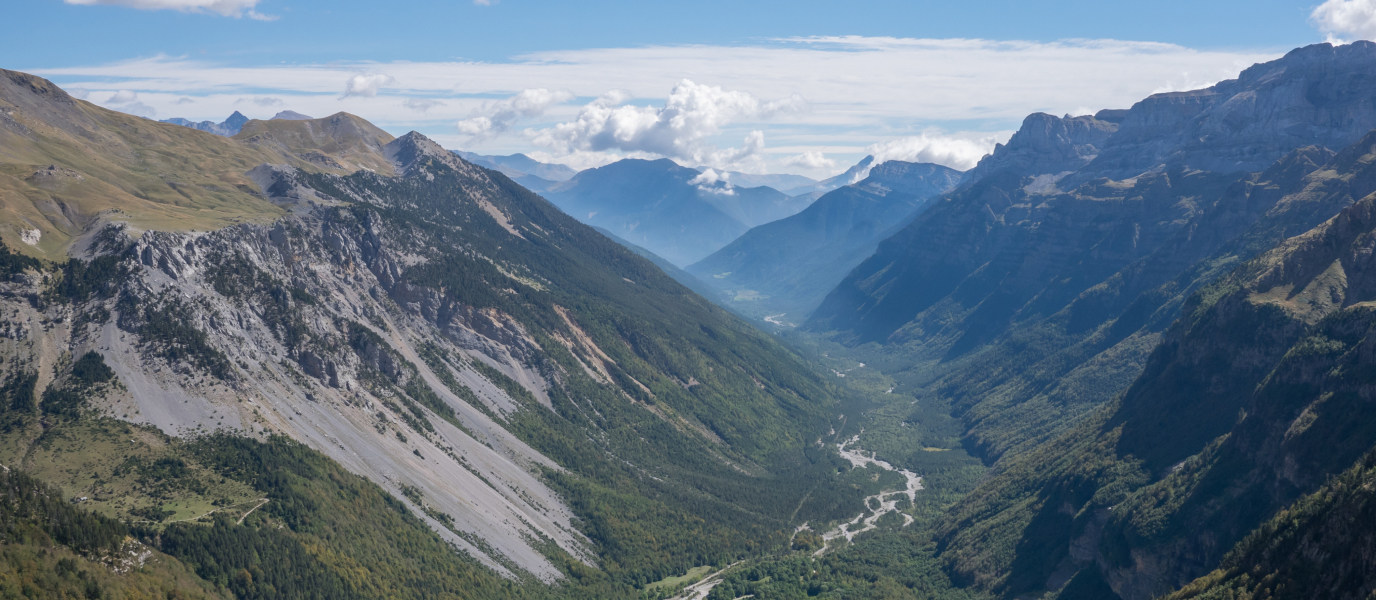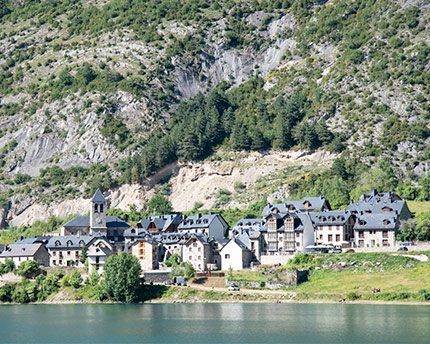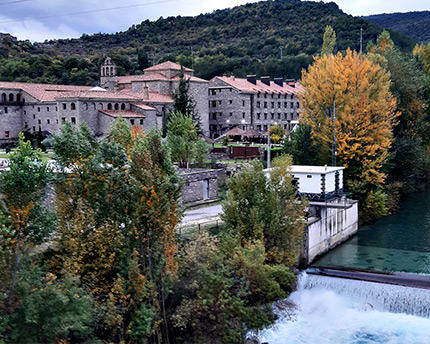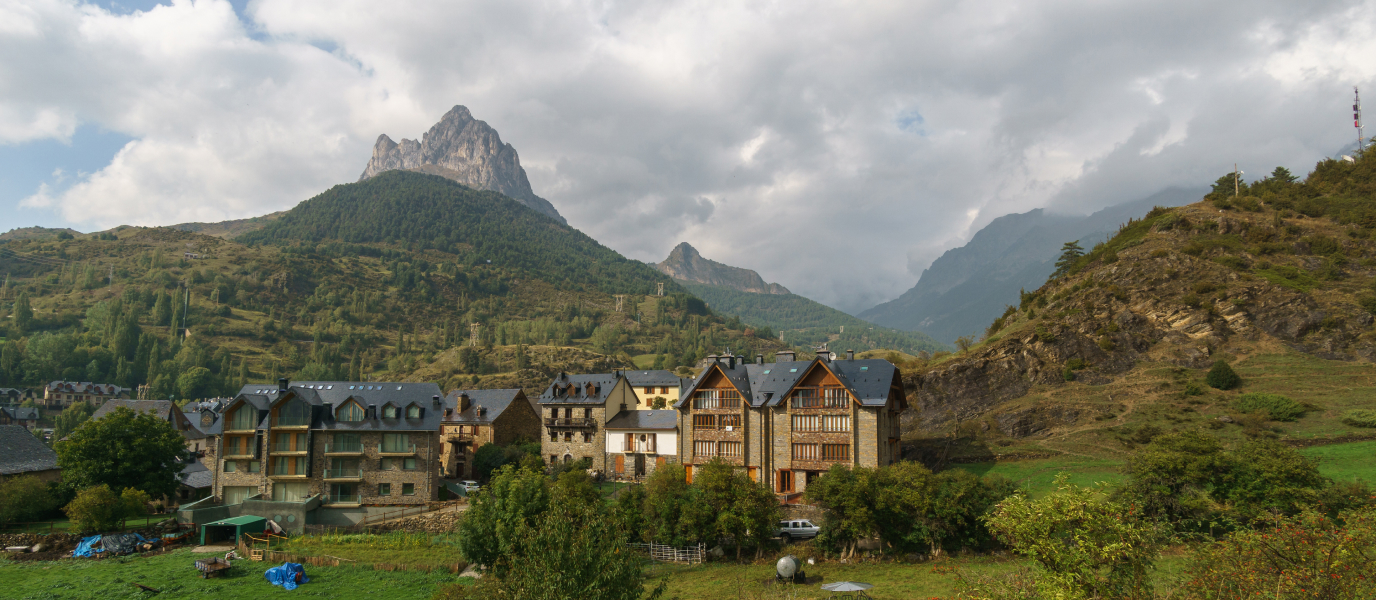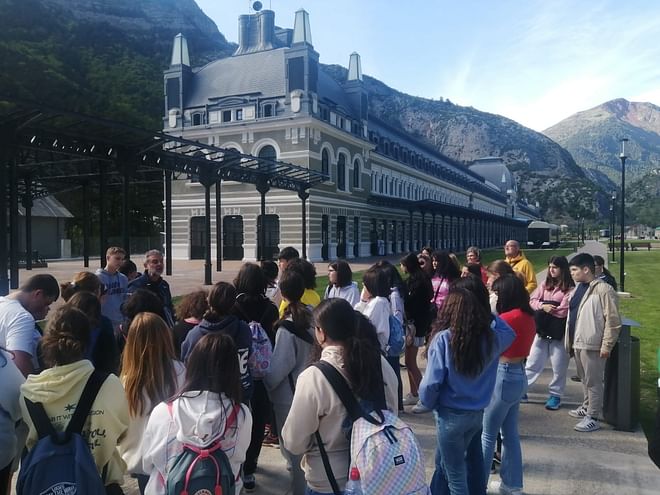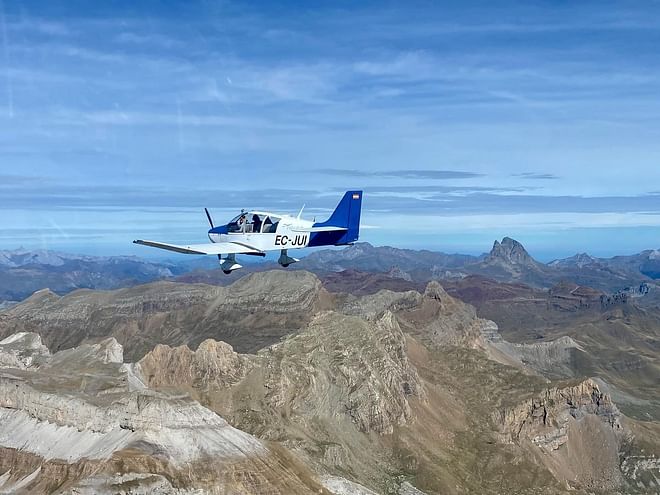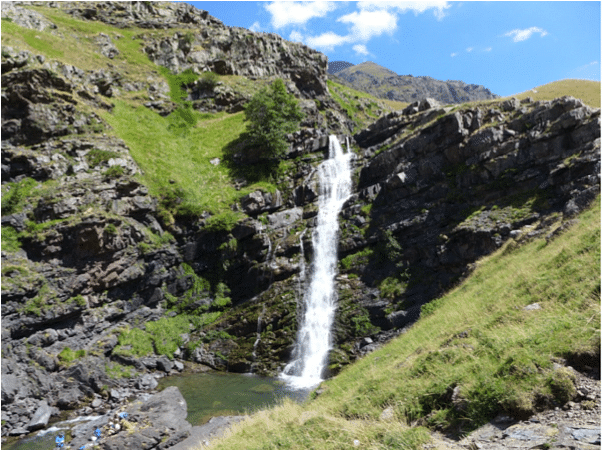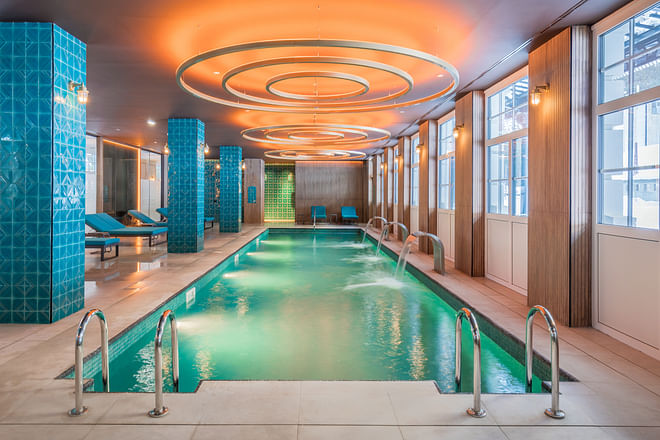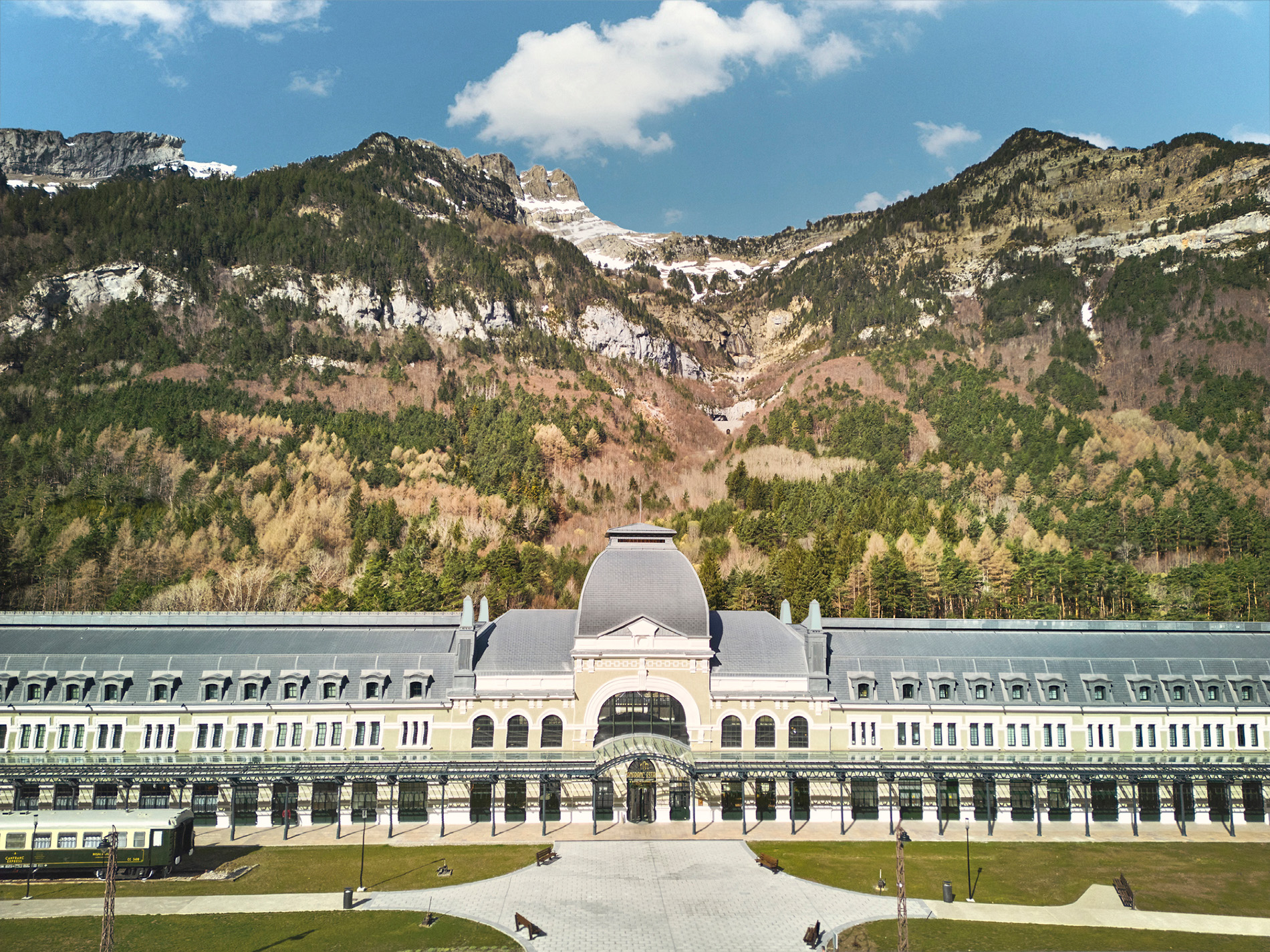Pineta valley is the natural gateway to the magnificent scenery on offer in Ordesa y Monte Perdido National Park. One of the most impressive protected spaces in Spain, it is crowned by peaks reaching a height of more than 3,000 metres at the head of the valley.
It is undoubtedly one of the most impressive natural and built-up areas in Huesca province and an essential destination for fans of hiking and high mountain climbs. As in the rest of the Pyrenees, here, the water, in the form of rivers, waterfalls, snow and ice, is of great importance: an element that nourishes the invaluable biodiversity found in the area. In fact, just contemplating the nature is one of the best activities that can and should be enjoyed in Pineta valley.
Natural setting and how to get there
Pineta valley is home to coniferous forests (fir and pine) and beech forests, the source of the Cinca river, with its natural waterfall and those of Lalarri, high mountain meadows, perpetual snow and glacial cirques, such as that of Pineta, which is at the foot of Monte Perdido (3,355 metres), Marboré (3,248 metres) and Tuca Roya (2,818 metres).
To get to Pineta valley by car, you must make your way to Bielsa along the A-138 from Barbastro. You can also get to Bielsa by bus on one of the services offered by Autocares Bergua from Ainsa, although it should be noted that services are reduced in the winter while in summer buses run daily.
What to see in Pineta valley
A route to see Pineta valley should start in Bielsa, which is the main village in the area. Despite having been destroyed during the Spanish Civil War (1936/1939), some of its most historical buildings were reconstructed, such as the Town Hall (sixteenth century) and the church of Nuestra Señora de la Asunción, which is also Renaissance. The Municipal Museum, featuring an interesting ethnological collection, is also worth a visit and a good introduction to what you can expect in the rest of the valley.
Pineta is also home to other interesting villages, such as Javierre (the true gateway to the valley), Espierba, Parzán and Chisagües. But, as we have already mentioned, more than the built-up area, what makes Pineta valley really stand out is its natural scenery. Some of the most highly recommended places are:
Circo de Pineta:
A geological formation of glacial origin, the headwaters of the Pineta valley and the source of the Cinca river, one of the main tributaries of the Ebro river.
Cascada del Cinca:
One of the most popular places to visit in Pineta valley, mainly because of how easy it is to reach but also for its beauty. It is located just over a one-kilometre walk from the Parador.
Plains and waterfalls in Lalarri:
Also of glacial origin, through this area runs the Lalarri river, which, before reaching the plains, runs through a ravine, forming several waterfalls, each more attractive and refreshing than the next.
Balcón de Pineta:
One of the best viewpoints in this part of the Pyrenees, which can be reached after a strenuous hike that starts from the Nuestra Señora de Pineta hermitage.
Ibón de Marboré:
A small mountain lake just above the Pineta cirque, at an altitude of around 2,600 metres. It remains frozen for a good part of the year.
Trails and nature
There are many hiking trails that cross the valley. And, although some of the most technical and complicated climbs in the Pyrenees (such as the Monte Perdido route) start here, there are routes for all types of people.
One of the most popular and well known is the one that leads to the Balcón de Pineta from the area surrounding the Parador. A medium difficulty route, it nevertheless has a steep incline and can be completed in just over three hours (one way).
From the Balcón de Pineta you can continue along the so-called Faja de la Tormosa, at an altitude of over 2,000 metres, from where you can enjoy impressive panoramic views of Monte Perdido and its glacier. From the area surrounding the Parador you can also reach Llanos de Lalarri, on a medium-low difficulty route that takes around three hours.
Along the trails you can see many native animals, including the Pyrenean chamois (a species of wild goat). The area is also home to mammals such as wild boars, otters, marmots, stoats and martens. In terms of birds there are bearded vultures, golden eagles, griffon vultures and Egyptian vultures, among many others. There is also an important colony of green lizards and Pyrenean newts.
In terms of flora, as previously mentioned, the area is full of coniferous and beech forests. Up high you can also find snow flowers (or edelweiss), as well as several species of mountain orchids, such as the one known as lady’s slipper.
Tips for visiting Pineta valley
The most important thing to bear in mind when visiting Pineta valley is the weather. Even in the middle of the summer, the weather can frequently change with the temperature dropping considerably. Storms are also frequent. This should not be a major problem, as long as you visit the valley well equipped, especially if you intend to do some hiking excursions to the main points of interest in the valley.
This is especially important in winter, when much of Pineta valley is covered in snow and visiting the highest points are not recommended. As this is a high mountain area, regardless of the season in which you visit, it is advisable to do so always with company and with enough food and water, in case you need to spend the night in one of the shelters.
On the other hand, it is important to remember that Pineta valley is part of a protected natural space, in which it is advisable to be especially respectful of the flora and fauna, avoiding altering their habitat as much as possible and always following the indications of the signs accompanying the trails as well as those in information centres.
What to see in the surrounding area
As Pineta valley is located in the heart of the Pyrenees, there are of course a wealth of beautiful natural landscapes that can be admired in the surrounding area. A great example of this is Chistau valley (or Gistau), through which Cinqueta river runs, surrounded, like Pineta, by magnificent mountains. From the village of Gistau, the highest in the valley, you can enjoy impressive panoramic views.
Very close by is Añisclo canyon, which is very close to the village of Escalona. It consists of a deep gorge created in the glacial period that, over the centuries, has been carved out by the Bellós river. The area is surrounded by thick highland forests, waterfalls and caves.
The town of Ainsa is without a doubt one of the most attractive in the Pyrenees of Huesca. Its streets and squares have retained part of the medieval layout, built on the remains of the wall and the castle built during Muslim rule.
Finally, another place worth a visit is the Garganta de Escuaín, one of the least-known parts of Ordesa y Monte Perdido National Park. It can be reached from the villages of Escuaín, Tella and Revilla, very close to Pineta valley. The area’s natural wealth makes it a great place for bird watching, including the bearded vulture.
Where to stay in Huesca province
The Hotel Barceló Monasterio de Boltaña is situated in the province of Huesca, relatively close to Pineta valley, Ordesa National Park and the emblematic Monte Perdido. The hotel is one of the group’s most striking hotels, since it is housed in a historical building (a former religious centre dating from the seventeenth century) that has been renovated with a great design, offering fantastic comfort.
In total, the hotel offers 96 rooms in addition to 40 villas distributed throughout the property. It also has a highly recommended à la carte restaurant, an outdoor swimming pool, a solarium terrace, a children’s playground, a fitness centre and the option of participating in a range of outdoor activities. For example, the hotel has a specialised workshop for bicycles with which you can tour the natural area.





























































